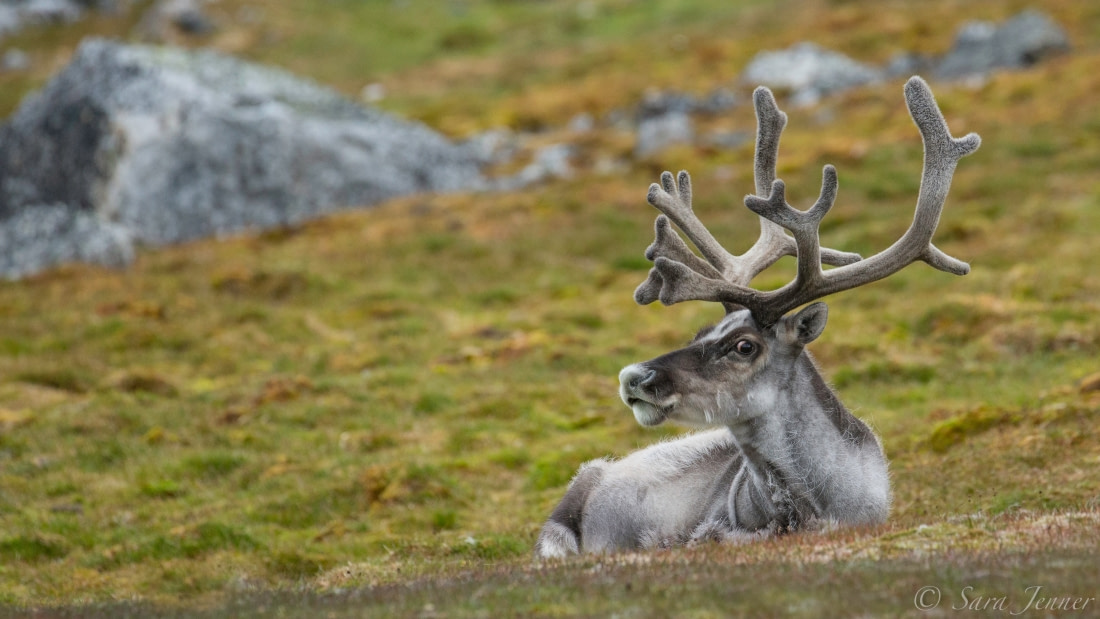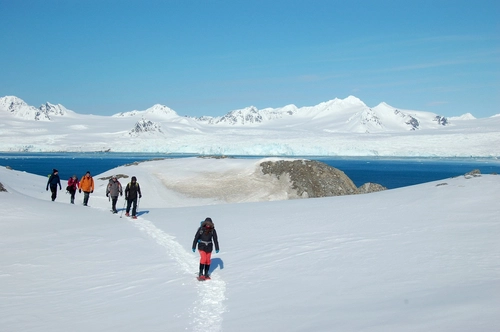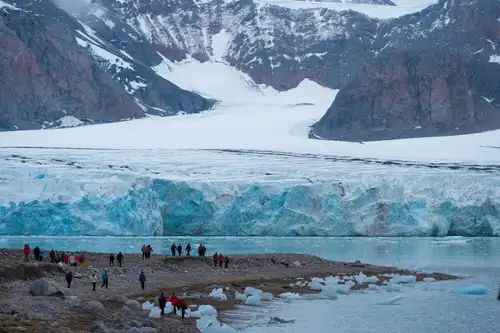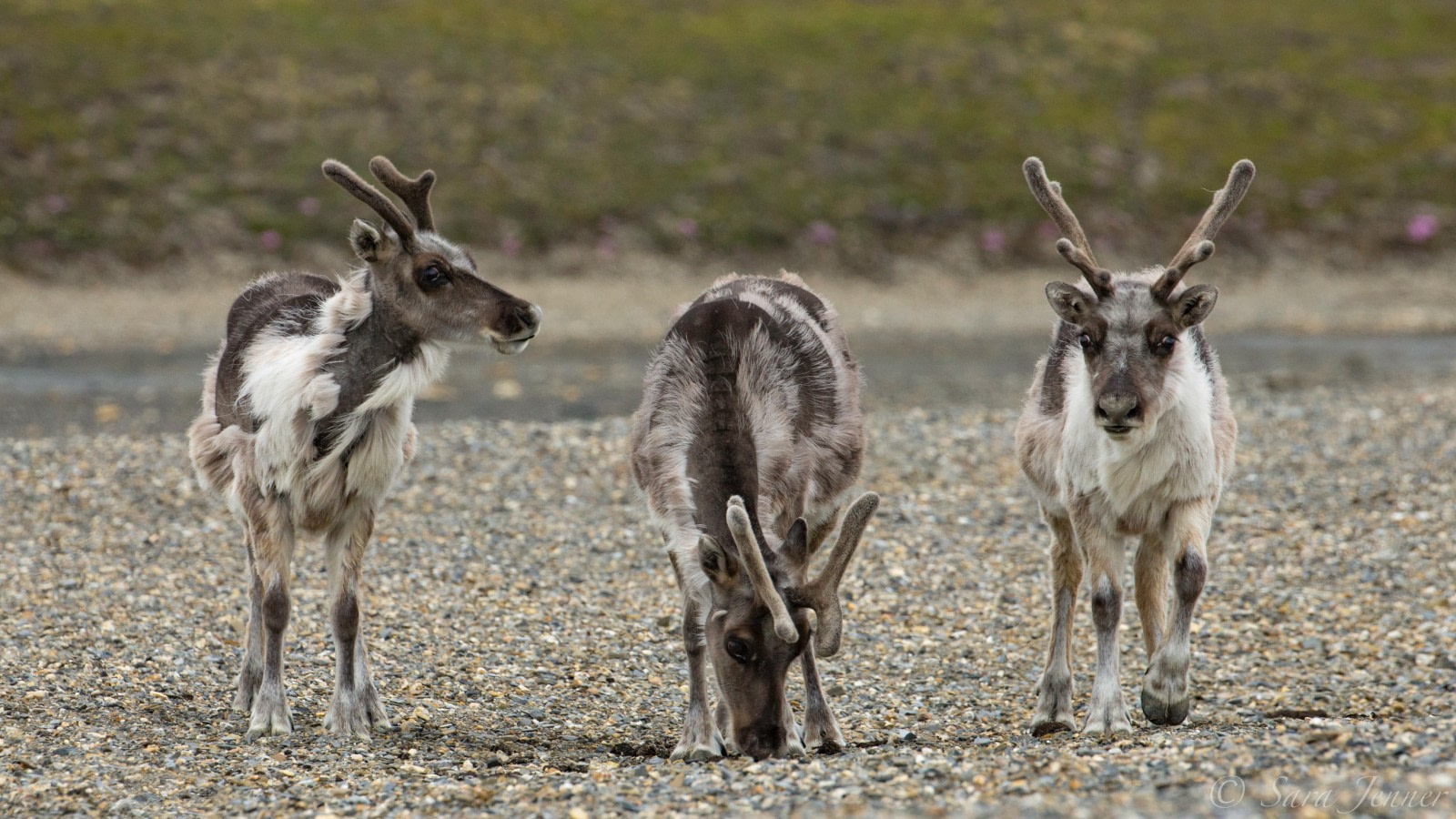Name: Svalbard Reindeer (Rangifer tarandus platyrhynchus)
Length: 1.5 to 1.6 metres (4.9 - 5.3 feet)
Weight: 50 to 90 kg (110 - 198 pounds), males being larger
Location: Svalbard
Conservation status: Least concern
Diet: Vegetarian
Appearance: White with darker coloring along their backs and faces

How do Svalbard reindeer feed?
In winter, Svalbard reindeer forage in areas with less snow, like mountain slopes and ridgelines. In summer, they feed extensively to build fat reserves for winter.
Are Svalbard reindeer social?
They form small groups of about five in summer, which may gather in winter due to limited feeding grounds. They are curious about people and may approach slowly before deciding to run or continue feeding.
How fast do Svalbard reindeer move?
They can sprint up to 80 km/h (50 mph) but are generally sedentary, shuffling as they feed.

What are Svalbard reindeer birthing rituals like?
Reaching sexual maturity at three, breeding starts in October. Males form harems of up to ten females. Pregnancy lasts seven months, with calves born in June. Calves grow from 3 kg (6.6 pounds) to 10 kg (22 pounds) in three months.
How long do Svalbard reindeer live?
They live an average of 10 years, with some reaching up to 17 years.
How many Svalbard reindeer are there today?
There are about 10,000 Svalbard reindeer alive today.

Do Svalbard reindeer have any natural predators?
They have no natural predators. Starvation is the main factor controlling their population.
7 sweet Svalbard reindeer facts
- Svalbard reindeer are the smallest subspecies of reindeer.
- Their weight varies significantly between seasons, from 65 kg (143 pounds) in spring to 90 kg (198 pounds) in autumn.
- Their fur lightens in winter.
- Male reindeer grow antlers from April to July, shedding them in early winter. Females grow antlers in June and keep them for a year.
- They are the only reindeer species in Svalbard.
- They were nearly hunted to extinction in the early 1900s but have recovered due to conservation efforts.
- Birth rates vary from 10% to 90% depending on the severity of the previous winter.






Related Trips



Eight Engaging Reindeer Facts

16 Conversation-Starting Svalbard Facts

Polar bear encounter in Spitsbergen

The Pack Ice and Polar Bears of North Spitsbergen

Polar Bear Primer: Eight Facts About the Arctic Wanderer

15 Toothy Facts About the Atlantic Walrus

Around Spitsbergen vs. North Spitsbergen

Birding Opportunities Abound in Spitsbergen

Spitsbergen: a true polar bear trip

What’s so Special about East Spitsbergen?

Polar Bear Sets Impressive New Diving Record

Svalbard’s 12 Most Iconic Animals

Svalbard’s Texas Bar

The Enchanting Islands of Svalbard

“The polar bear will still be there”

Arctic Icon: 10 Facts about the Polar Bear

Svalbard a Disneyland for geologists

Seizing the Season: Spitsbergen’s Late Spring, Early Summer

Inside the Svalbard Global Seed Vault






 8 Days / 7 Nights
8 Days / 7 Nights




